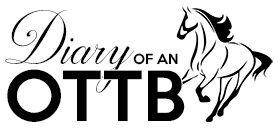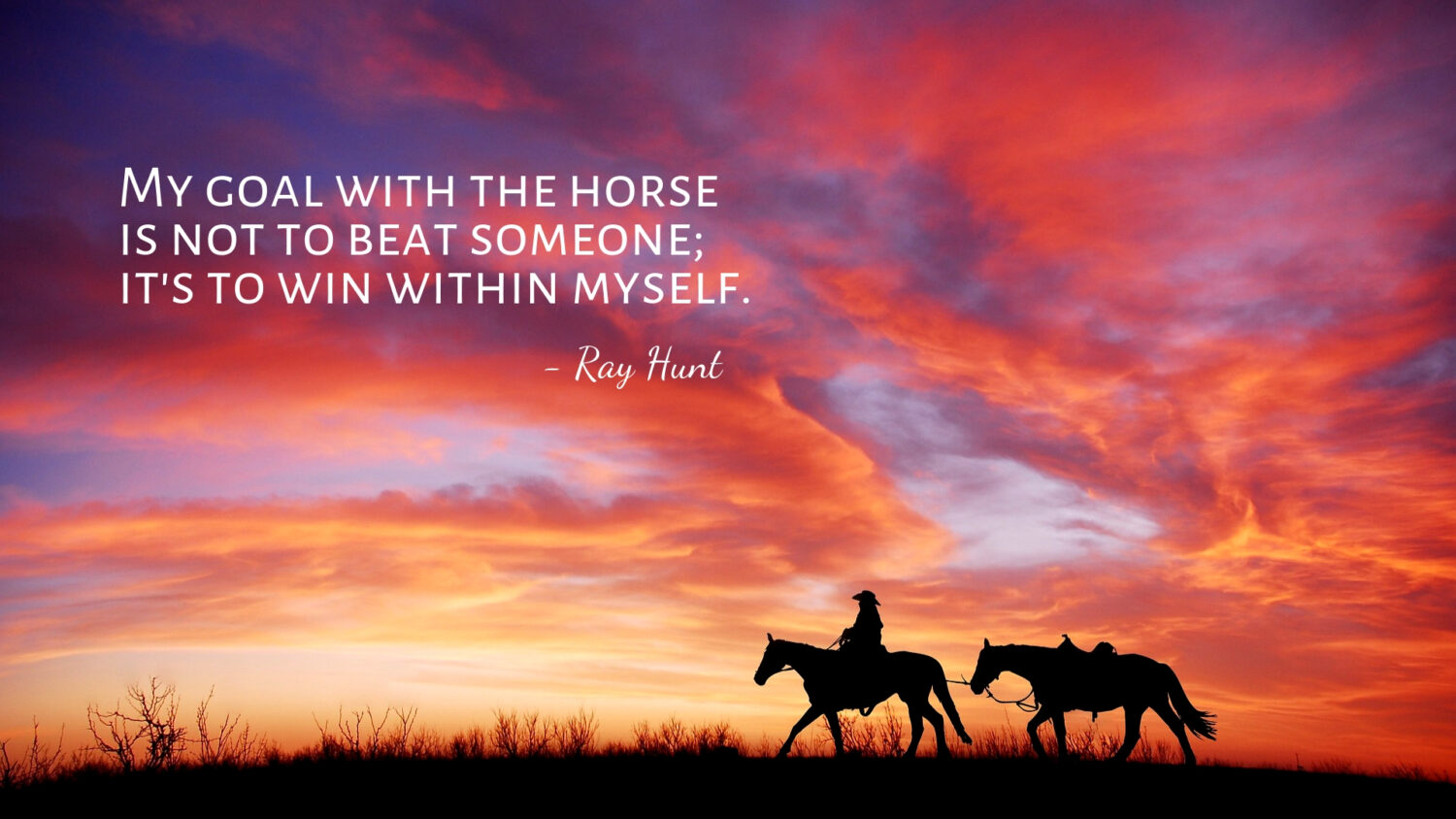Getting an OTTB to move in a frame can be a difficult subject to wrap your head around… and if it’s difficult for a human just imagine how difficult it is for a green broke horse!
This is the opportunity/curse/absolute blessing of restarting off-track thoroughbreds: they don’t know what you want, but if you’re consistent in teaching them and allowing them to make the right choice, then in most situations they will learn and adapt quickly.
It’s situations when riders are unsure how to respond that creates confusion for the horse. It makes sense — if you don’t know what you’re doing, how can you teach a horse who has no idea what you’re asking for? Blind leading the blind and also why taking lessons/having an instructor is so important.
What is “moving in a frame”?
We’re going to lick the problem of you understanding what moving in a frame is before we move on to how we get an OTTB (or really any horse) to do this.
Moving in a frame can be a difficult and frustrating principal to teach to your horse, especially if you don’t have a good grasp on the subject yourself. It can also easily be confused with a few more noticeable behaviors, such as getting your horse to move with their head down. The reality is that any head positioning is secondary to the underlying meaning of moving in a frame — for this we’re referring to how the horse moves and carries itself through the body, with their back lifted and engaged and their hind end stepping well underneath their barrels.
Moving in such a way does a number of things to help the horse besides just improving your dressage scores, chief among them strengthening the muscles in their back, allowing them to move with a straight and engaged spine.
What is the Difference Between Collection & Moving in a Frame & On the Bit?
These are complicated subjects but here’s the best explanations of these three distinctions, even though you can easily write full length dissertations on any one of these phrases.
On the Bit
To get your horse on the bit means that they are moving forward and responding to pressure from your hands. You should be able to dictate pace, pressure, and direction all from your hands, thanks largely to the ability of your horse to stay on the bit.
Collection
Collection is the top of the dressage training pyramid (you can view that here) for a darn good reason — it’s incredibly difficult for horses to be collected and rarely do they remain collected for extended periods of time. And that’s ok! It’s an incredibly difficult thing to ask a horse to do, it takes a ton of strength and balance on their part and even more skill on the part of the rider to know how to ask and release when the horse gets the right answer.
Moving in a Frame
Moving in a frame is getting your horse to move within a predetermined outline. In other words, not flailing, bobbing, or drifting from side to side. It’s allowing your horse to move forward and engage the correct muscles in their back and hind end, allowing them to lift up and move their feet under their body.
Exercises to Help Your Horse Move In Frame
Engaging a horse’s back and encouraging them to move in a frame takes muscle, balance, and a conditioned response to your cues. In order to first make that happen there are some exercises you can do both in the saddle and on the ground to help build up these muscles.
Like many things with horses we start on the ground. Check out this video below by Dr. Emma Poole from Foundation Equine Clinic. She shows 2 simple ground exercises that encourage a horse to lift and round its back using pressure points near the sternum and their hindquarters.
When you’re riding and asking for a frame it’s important to remember not to try pulling them into it with your reins. You want to use your legs to drive your horse onto the bit and envision catching them with your hands and the bit. We’re not trying to prompt a tug of war, we’re trying to condition the horse that with pressure from a rider’s leg and hands the horse should start to put its head down and engage its back. This exercise is less about direction than it is about how a horse carries him or herself.
You can check out this excellent video below to see how one rider talks herself through that process.
There are also a few skills that you (yes, you!) should focus on developing in order to help encourage your horse or OTTB to move in a frame.
- Soft Hands
- Strong Legs
- Patience
These three skills are really all a rider needs to help coach their OTTB into moving in a frame and without these skills it’s really difficult to get there. But keep in mind, it’s process! Your horse probably won’t learn this in a single session but don’t be discouraged. Using whatever resources you might have available from books to YouTube to a trainer, take a lesson and focus on improving your own skills and your horse’s are sure to follow.
2
